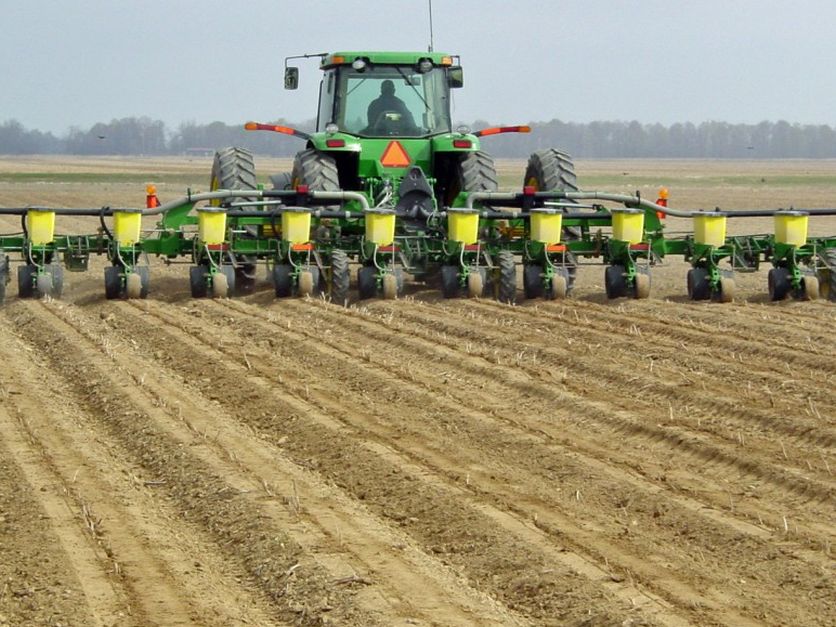New figures from the Department of Agriculture show an increase in tractor tires rolling in the last week, but a number of them are either sitting still or stuck in the mud as wet conditions hinder planting progress across the country.
According to USDA’s weekly Crop Progress report, just under half – 49 percent – of the nation’s corn crop is in the ground. That represents progress from last week, when planting was reported at 30 percent, but producers are still well behind the 80 percent five-year average.
Soybeans – typically planted later in the year – aren’t faring much better. USDA estimates 19 percent of the soybean acreage is planted, well behind the 47 percent five-year average.
Wet conditions are sprinkled throughout the country, but Illinois is one of several poster children for this year’s issues. USDA pegged the state’s planting progress at 24 percent. That’s an improvement over last week’s 11 percent, but farmers there are still way behind normal.
“They should be close to 90 percent done by now,” said INTL FCStone Chief Commodities Economist Arlan Suderman. “That’s not good for the number-two state in the country.”
Suderman called Iowa “the bright spot, if there is one,” but the 70 percent planting is still almost 20 percent behind the five-year average.
The lag in corn planting has some wondering if producers may plant acres originally intended for corn to soybeans instead to make do with the shorter growing season, but Suderman says it’s still hard to tell if that will happen. He said there’s a chance “a significant number” of acres will end up filing prevented planting filing claims on land they intended to plant to corn.
“As wet as the forecast is, we may not have as big a shift as what we first thought,” he said. “I know some of those farmers who were able to plant were returning soybean seed to plant corn, so we’ll have to offset that before we can even talk about an increase in soybean acres.”
There are no official estimates of how many prevented-planted acres are expected, but last week, USDA Risk Management Agency Administrator Martin Barbre said, “I don’t see how we’re not going to have at least a larger than normal amount of prevent plant.” He also said the funds will be available to support the influx of interest in the program.
“Such sums as needed,” he quipped, offering a nod to congressional language funding RMA.
For more news, go to www.Agri-Pulse.com


